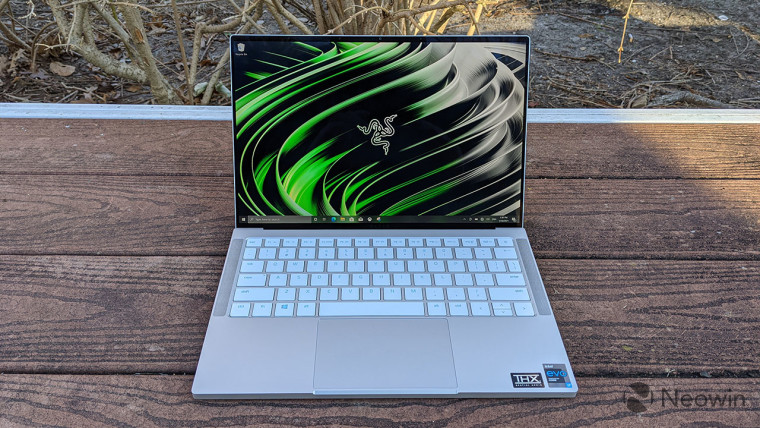
This is the second part of our Intel Evo vs Apple Silicon series, where we’re taking a look at what each side can do better than the other. The MacBook Pro 13, Razer Book 13, Razer Core X, Nvidia GeForce RTX 2080 Ti, Samsung T7 Touch SSD, and CalDigit Thunderbolt 3 dock were provided by Intel. All opinions expressed are a result of our own testing and experience.
If you’ve already seen the MacBook Pro unboxing, then you know where we’re at. Now, it’s tie to take a look at the Razer Book 13. This probably won’t be the only machine that I use for comparison against the MacBook Pro, because I’ve used so many Intel Evo machines even though they’ve only been out for a few months. Intel actually offered me a Dell XPS 13 2-in-1 first, then an HP Spectre x360, and when I pointed out that I’d already reviewed those, it ended up being the Razer Book.
I’m pretty happy that it turned out that way, because I quite like this machine. However, out of all of the choices, this is probably the one that looks and feels the most similar to the MacBook Pro itself. It has a similar design, with that feel of being milled from a block of aluminum. The Razer Book has different-color backlit keys though, which is pretty cool. By default at least, it doesn’t use the bold colors that you’d find on a gaming laptop.
In fact, it’s worth pointing out that this isn’t a gaming laptop, something that you rarely see from Razer. This machine is aimed at productivity, so it serves a different market than the company is used to. I think it did a great job.
The thing about an Intel PC is that the entire PC ecosystem is built for Intel. While we’re obviously going to find compatibility issue on the Apple M1 end of things, everything works with Intel. And with Thunderbolt 4, we can use a single port to connect dual 4K monitors, or an external GPU. With the next part in this series, we’ll be looking at setting up just that.
Check out the rest of the series: